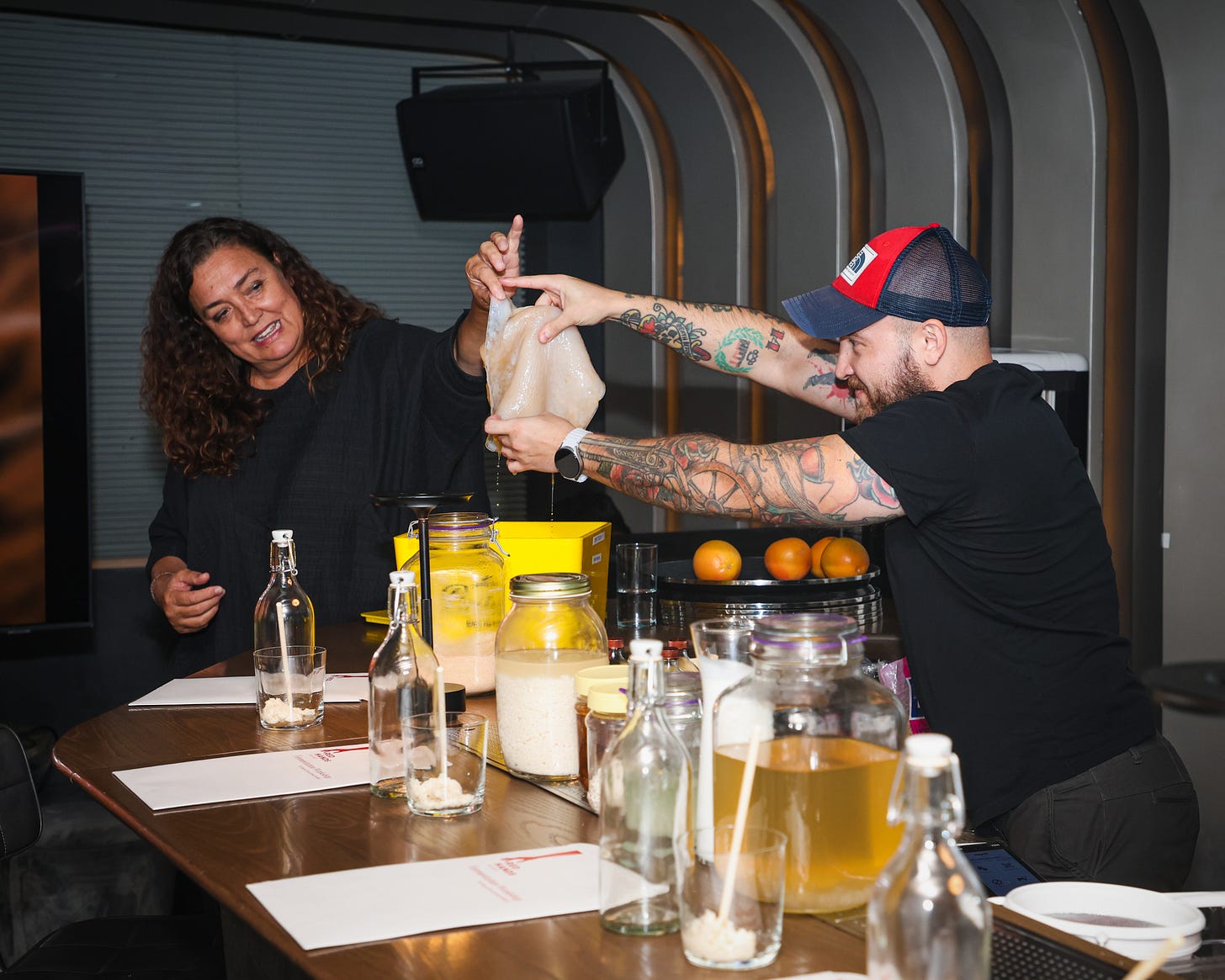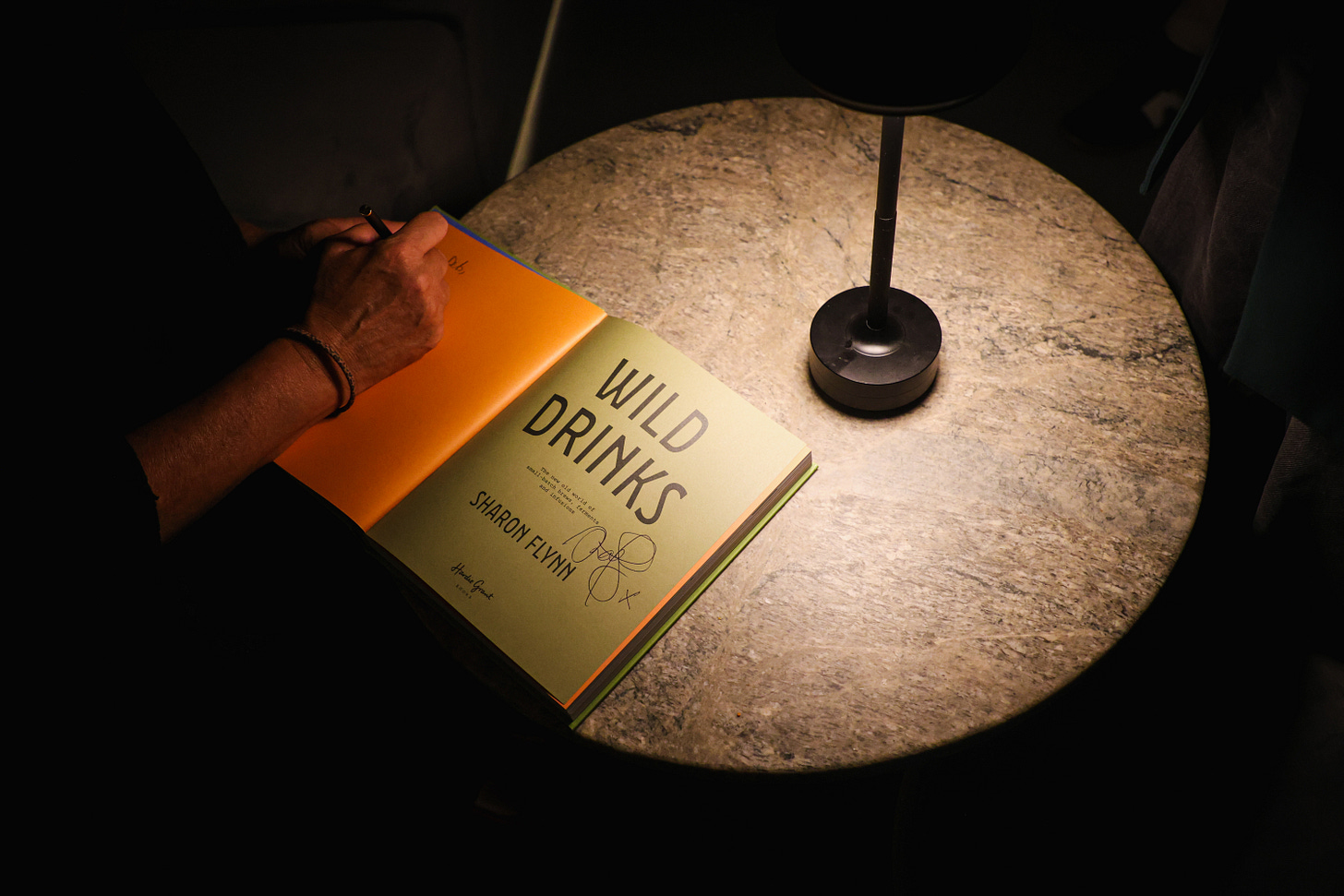Sharon Flynn and Denis Pashkov Taught Dubai Bartenders to Craft Real Kvass, Water Kefir & Other Lacto-Fermented Sodas
A hands-on fermentation workshop in Dubai explored how to make authentic kvass, milk kefir, and water kefir soda with ease
On June 30, fermentation came alive in Dubai during a workshop led by Sharon Flynn—bestselling author of Ferment For Good and Wild Drinks—and local fermentation expert Denis Pashkov, hosted as part of the Campari Red Hands program. This hands-on event proved one essential truth: fermentation is easy, approachable, and incredibly rewarding, even for complete beginners (although there also advanced fermentation enthusiasts).
Whether your goal is to make milk kefir at home, brew authentic kvass, or create your own probiotic water kefir sodas, this workshop delivered all the tools and confidence needed to get started—without fancy equipment or prior experience.
Why This Fermentation Workshop Mattered
Today’s beverage landscape is dominated by sugary soft drinks and synthetic flavors. But there’s a better way. By using fermentation, you can craft naturally carbonated, low-sugar, nutrient-dense drinks with just a few ingredients and the right conditions.
The best part? You can do it in your kitchen. This workshop made the process clear, simple, and repeatable—whether you’re a bar professional or a curious home fermenter.
Participants didn’t just learn—they fermented:
Ginger bug from scratch
Water kefir grains in action
Milk kefir whey as a sustainable and forgiving fermentation powerhouse
Amazake turned into bubbly soda
Traditional kvass, reimagined for the modern palate
And everyone left with their own starter cultures to continue fermenting at home.
The Science Behind Fermented Sodas
Understanding microbes helps you ferment with confidence
Fermentation is one of the oldest and most natural ways to transform food. In the case of lacto-fermented sodas, we harness the power of lactic acid bacteria (LAB) and wild yeasts to create effervescent, tangy, probiotic-rich drinks—without artificial carbonation or preservatives.
1. Ginger Bug Sodas: Wild Fermentation at Work
A ginger bug is a simple starter made from ginger, sugar, and water. It naturally captures wild yeasts like Saccharomyces and Lactobacillus from the environment.
These microbes consume sugar, producing CO₂ and organic acids
The result is a fizzy, complex soda base—your real non-alcoholic ginger beer
Can be flavored with fruits, herbs, or spices during secondary fermentation
2. Water Kefir: A Flavor Booster
Water kefir grains (SCOBY) transform sugary water into a refreshing, gut-friendly drink.
Key microbes: Lactobacillus, Acetobacter, and yeasts
Produces mild acidity and natural bubbles
Fruit-infused secondary fermentation boosts flavor and fizz
3. Milk Kefir Whey Sodas: Probiotic Powerhouse
Milk kefir doesn’t end with the creamy curds—its whey is a functional ingredient in its own right. This translucent, tangy liquid, rich in LAB and peptides, can be turned into a lightly fizzy soda.
Diverse culture of bacteria and yeast is able to perform at a wide range of temperatures
For the same reason, it is able to consume a wide range of sugars
Rich in probiotics
4. Lacto-Fermented Amazake Sodas: Enzymatic & Microbial Magic
Amazake is a sweet rice drink created by koji mold (Aspergillus oryzae) breaking down starches and proteins.
When LAB is introduced, the sugars ferment into a light, tangy soda
No added sugar—just enzymatic sweetness and probiotic sparkle
A perfect example of traditional Japanese methods meeting innovative soda making
5. Modern Kvass: Reinventing Tradition
Kvass is a Slavic fermented drink made from stale rye bread and wild microbes.
Dominated by Lactobacillus and wild yeasts
Toasted bread adds deep flavor, while sourdough starter introduces natural cultures
Naturally fizzy, tangy, and full of gut-friendly microbes
Authentic Kvass Recipe (Taught in the Workshop)
No yeast packets, no forced carbonation—just wild fermentation done right.
Ingredients
2.5 L hot water
200 g raw sugar
500 g fermented rye malt (optional but adds complexity and fermentable sugars)
100 g sourdough starter (source of LAB and wild yeast)
100 g old rye bread, toasted dark (flavoring agent)
Method
Steep: Combine hot water and rye malt. Let cool naturally for ~2 hours until below 30°C.
Mix: Add sugar, starter, and toasted bread. Stir well.
Ferment: Leave at room temperature (20–24°C) for 4 days.
Strain: Use a fine sieve or super-bag to remove solids.
Condition: Let ferment in the fridge (under 6°C) for another 2 days to carbonate.
Bottle & Store: Carefully rack off sediment, bottle, and keep refrigerated. Consume within 10 days.
🔁 Starter tip: Save 200 ml of finished kvass to inoculate the next batch.
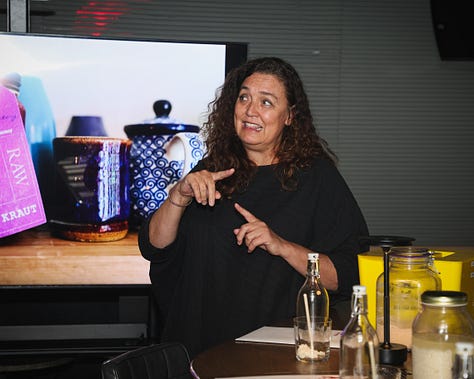
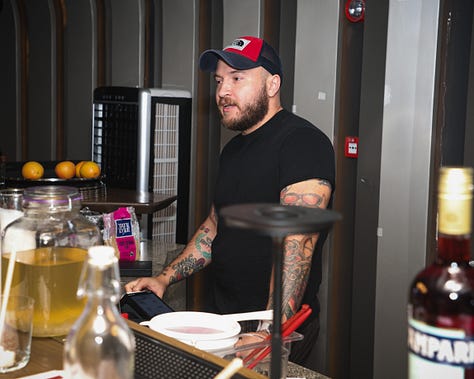
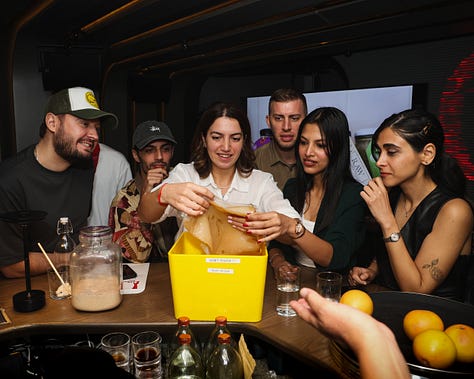
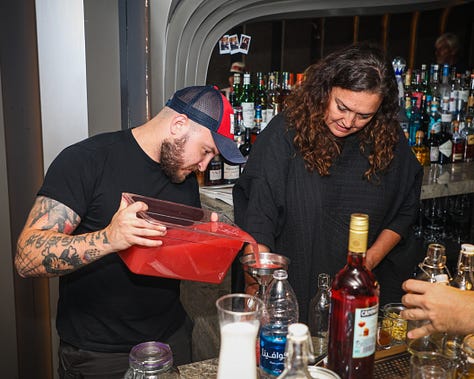
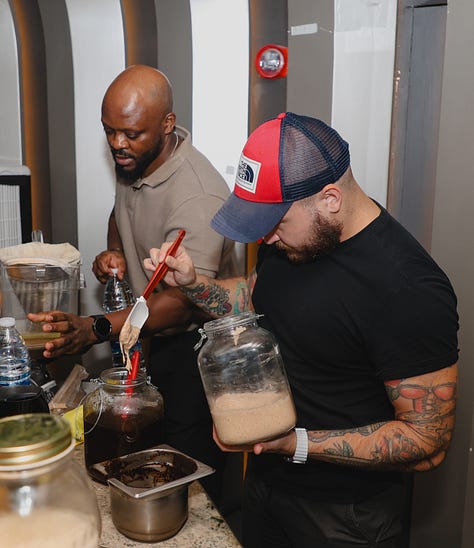
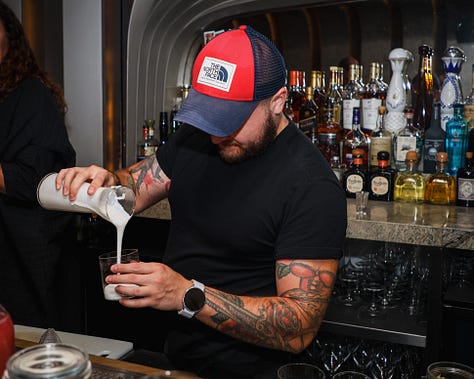
You Don’t Need a Lab—Just Curiosity
One of the workshop’s key takeaways? Fermentation is not intimidating. With just basic kitchen tools, clean jars, and a few ingredients, anyone can make living sodas at home.
Whether you're looking to expand your bar menu, cut down on sugar, or just reconnect with real food processes, this workshop made it clear:
Fermentation is easy. Fermentation is fun. And fermentation belongs in Dubai.
connect with us on Instagram:
Denis Pashkov
cosmos society



